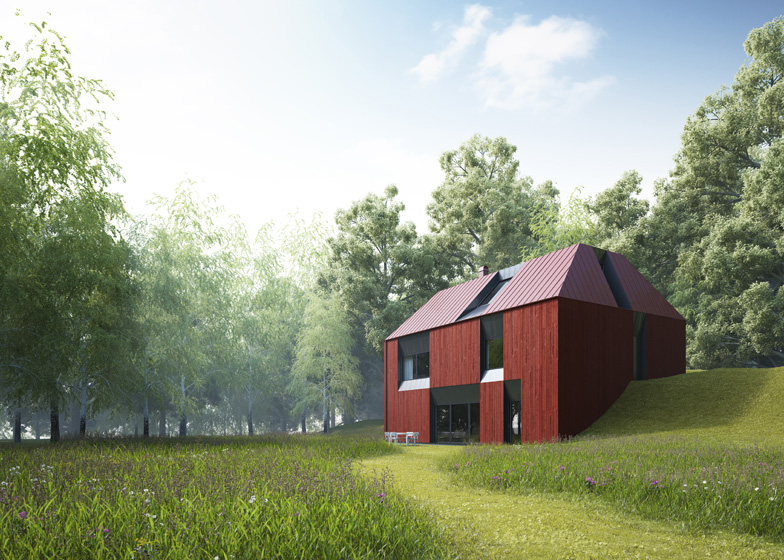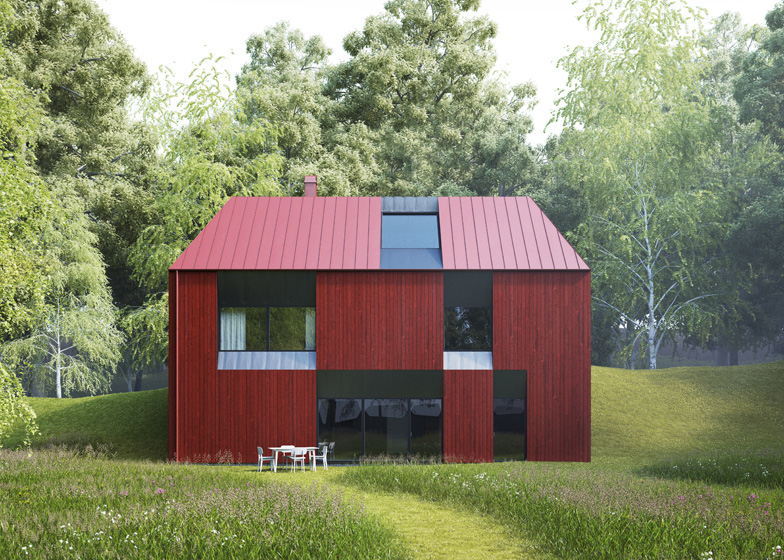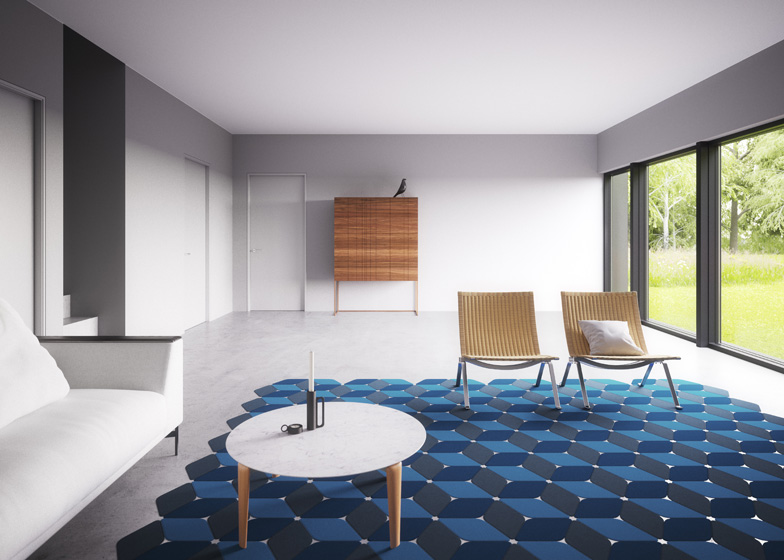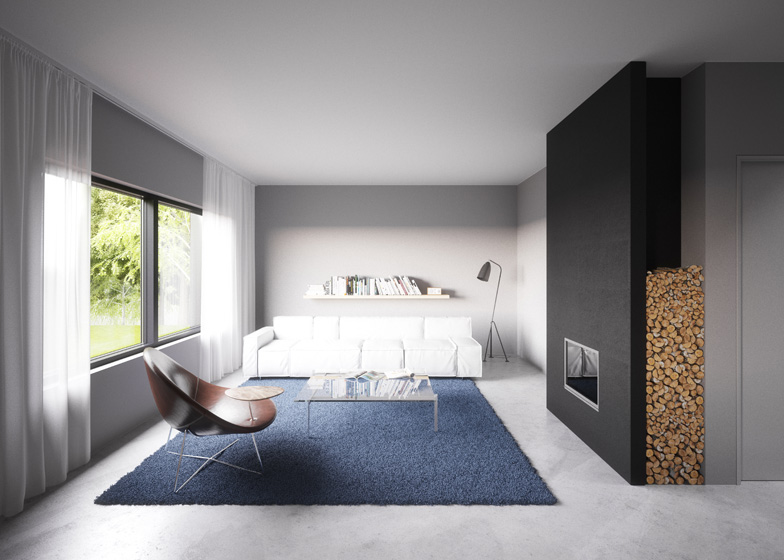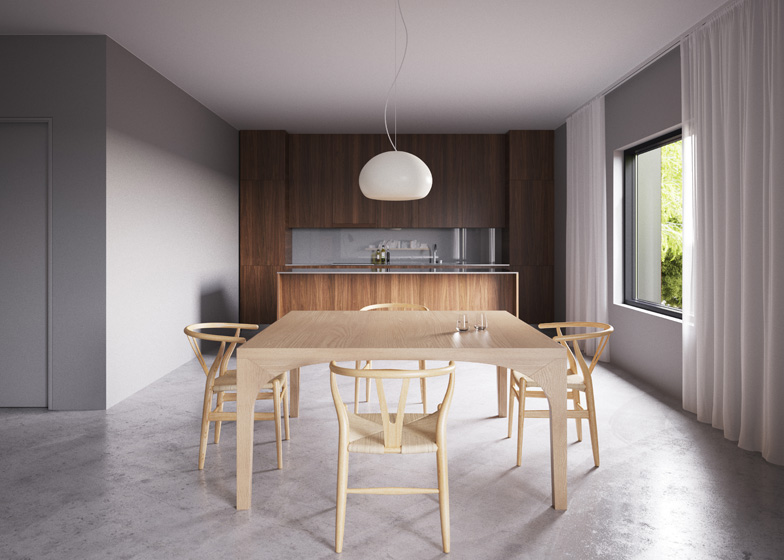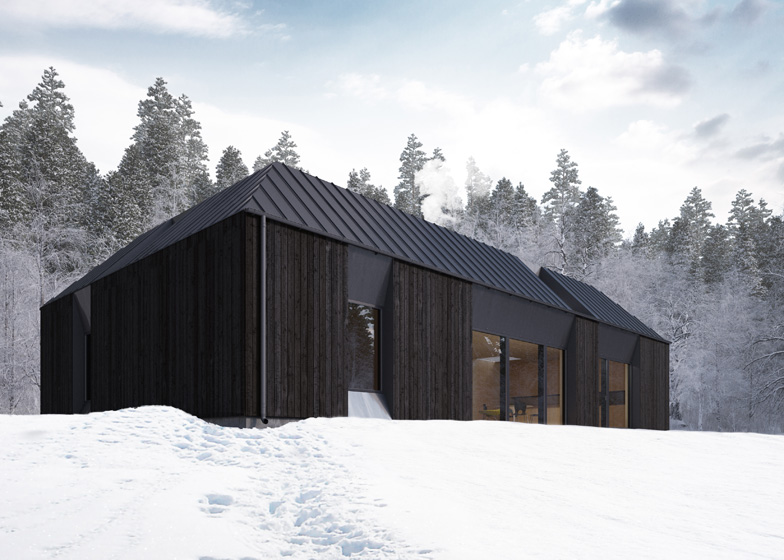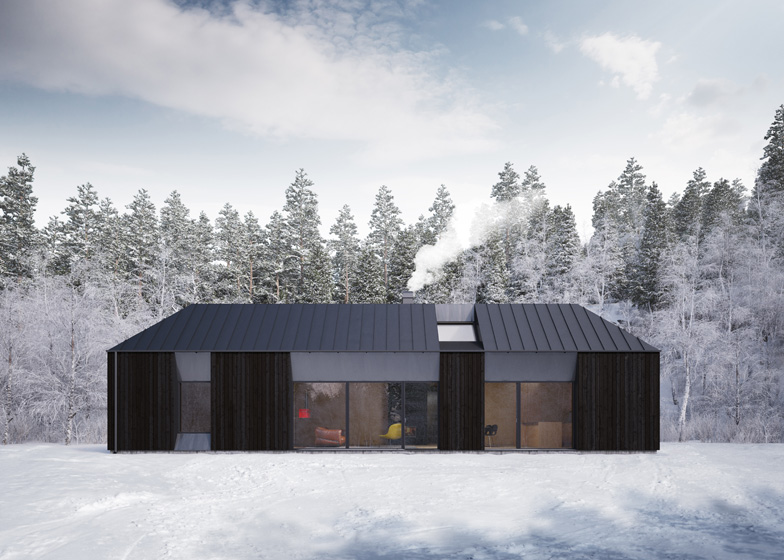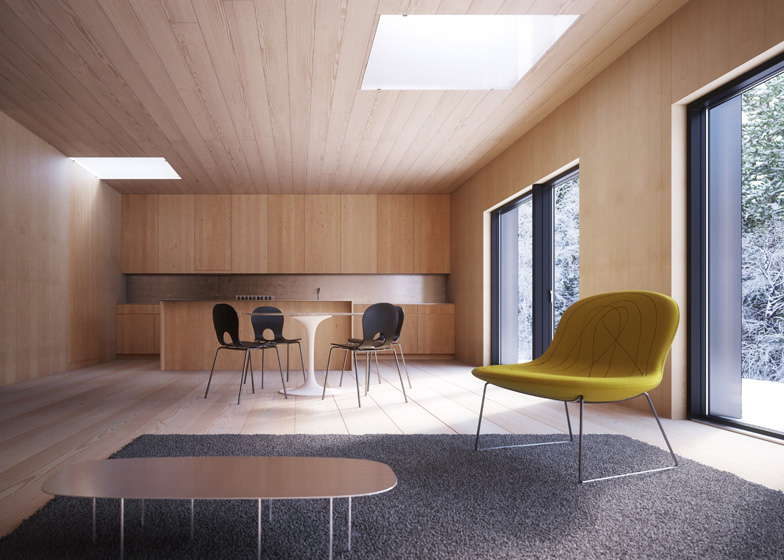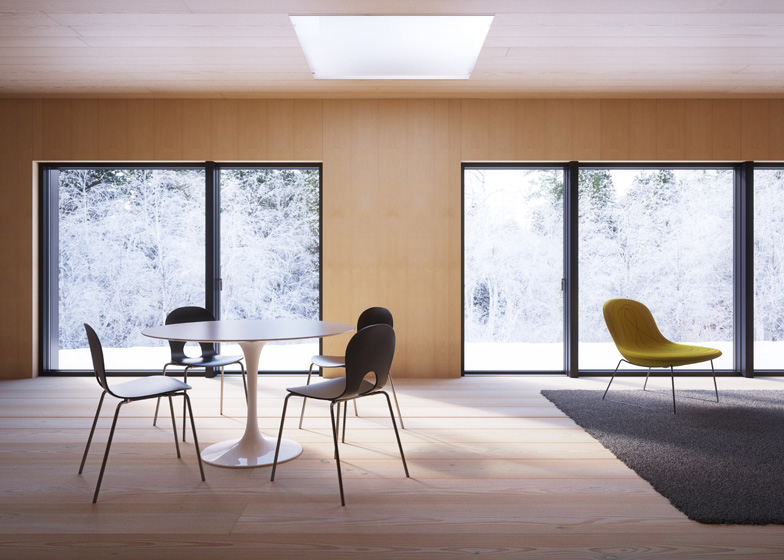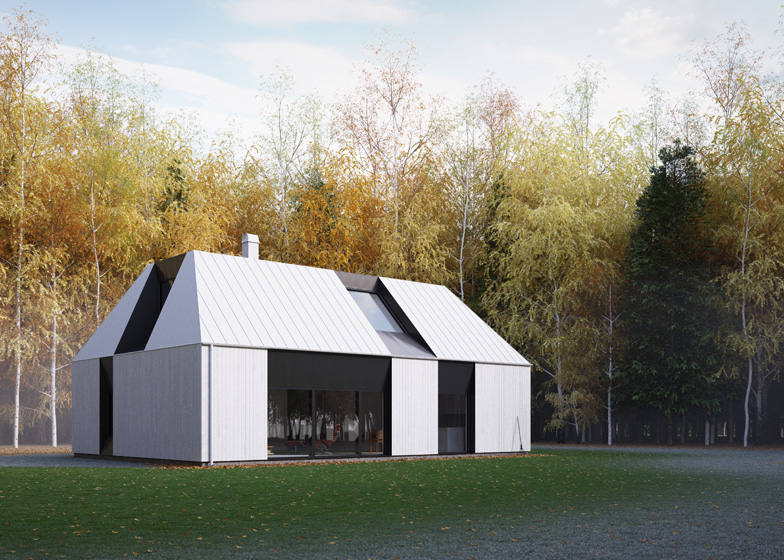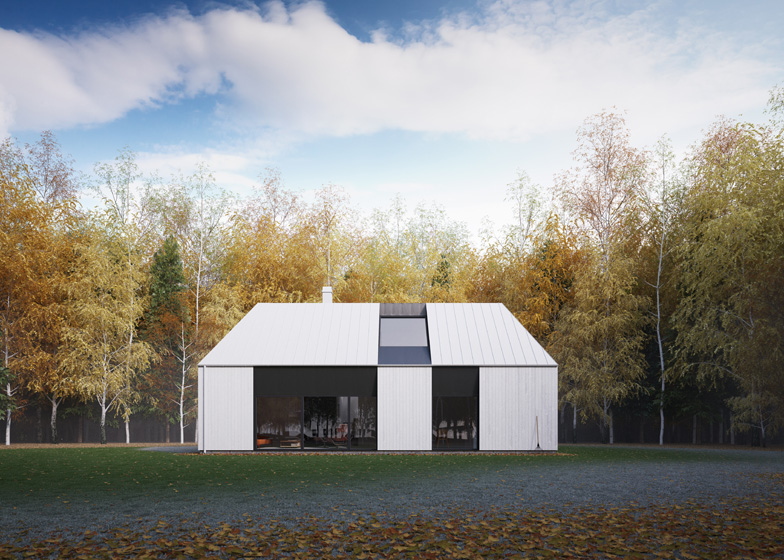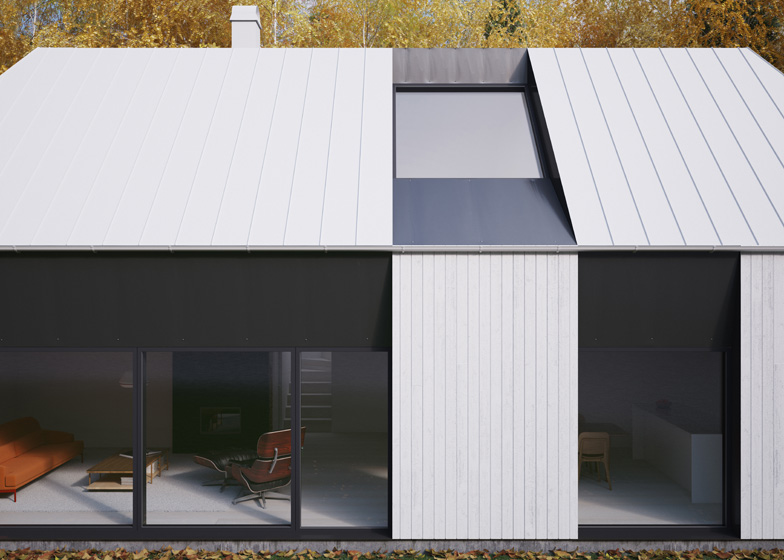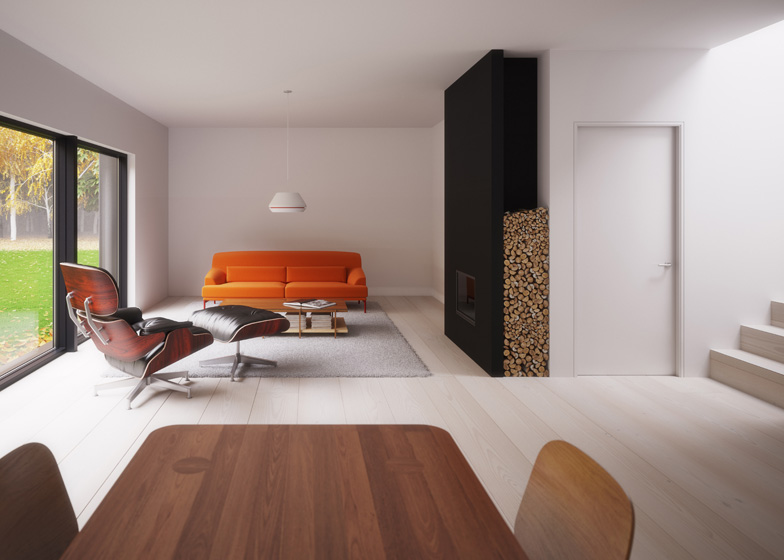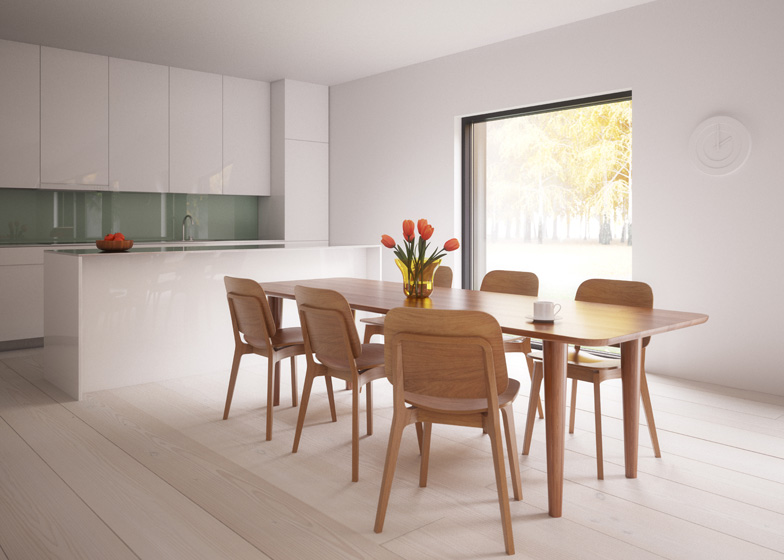Milan 2013: Swedish architects Claesson Koivisto Rune will present a kit-of-parts for a prefabricated Scandinavian house in Milan this April (+ slideshow).
"The prefab/kit house market generally prefers fake historical over contemporary," says Claesson Koivisto Rune, "and it is more than common that an architect has not been involved at all." The team was keen to avoid this conservative approach and wanted to come up with a modern design that reflected current Swedish architecture.
With Tind House, they developed distinctive contemporary details for the roof shape, windows and doors of the flexible system, which can be constructed as a single-storey residence for a couple or a family home with two or three floors.
Each house features a roof with a gentle incline to match the housing vernacular in Sweden. The peak of the roof is flat, which the designers compare to the profiles of the Scandinavian Mountains.
Windows or skylights are generously sized to offer the best possible views and their frames are bevelled on the outside to create a rhythm with the rest of the facade, but each one sits flush with the interior walls.
"The greatest challenge was to meet the demands for a client-flexible house with maintained architectural integrity," architect Mårten Claesson told Dezeen. "We had to establish a couple of strong feature principles – the roof shape, the full cut-out of windows and doors, and their side alignment between different floor and roof levels – that would define a house that could vary in size, colour and number of floors."
Tind House is designed to sit on a level plan, but can easily be adapted to negotiate a sloping site. The layout can also be altered to suit different occupants and locations.
Ordinarily, the entrance and staircase are positioned at the front of the building and lead through to living and dining rooms at the back. Utility rooms, bathrooms and bedrooms are placed at the sides, plus extra bedrooms and bathrooms occupy the upstairs floors on the two- and three-storey buildings.
The house is manufactured by Swedish house builder Fiskarhedenvillan and will be presented at the Globo Art Space in Milan.
Claesson Koivisto Rune comprises a team of designers and architects, whose projects includes lighting and furniture, as well as architecture. They recently presented a collection of colourful pendant lamps and a set of solid brass coat hooks as part of Stockholm Design Week. See more design by Claesson Koivisto Rune, including a house on the Baltic island of Öland.
Other prefabricated houses we've featured include one in Portugal that costs the same as a family car and another home that's lifted into place by a helicopter. See more prefabricated buildings on Dezeen.
Images are by Peter Guthrie.
Here's a project decription from Claesson Koivisto Rune:
Claesson Koivisto Rune at Globo Art Space - Tind house
Claesson Koivisto Rune Architects is showing for the first time to an international audience their new house called Tind. Tind is a prefab house and represents a brand new typology for this particular field.
Globo being a manufacturer of sanitary porcelain, it is perhaps peculiar to show architecture during the Salone del Mobile. But Globo Art Space is not a commercial scene but a new gallery space offered by Globo to promote art, architecture and related culture in general.
Claesson Koivisto Rune is also a product and furniture design practice, but is during this event proud to present their architecture, by showing their most recent project. It will also be an example of the Scandinavian approach to living, not in the usual historic, modernistic context, but right now, right here.
The Tind* house is a new prefab house by Swedish Claesson Koivisto Rune Architects. Manufactured by Fiskarhedenvillan and provided to clients as a complete building kit.
The prefab/kit house market is traditionally conservative and generally prefers fake historical over contemporary. And it is more than common that an architect has not been involved at all. If this is from neglect on the manufacturers' side or arrogance from the architects' is difficult to know. What we do know, is that it is time for change.
We have built a house built on a concept built on a set of features. The prefab house needs to be flexible in size and configuration to accomodate individual families' needs and individual locations. So in order to maintain the houses' architectural integrity it is some strong features rather than exact dimensions that are important.
The first feature is the roof:
The traditional Swedish one-family house has a single-pitch roof. With its pitch angle not as steep as in Germany and not as gentle as in Italy, but in between. The Tind house's roof starts with this typical Swedish pitch. But then the peak is cut off. So that the roof becomes somewhat of a hybrid between single-pitch and flat.
The second feature is the window niches:
First, windows are few, but big, and allocated to the most important walls, rather than many, small and on every wall. Second, every opening, window or door, is flush with the interior. Furthermore the thicknesses of the joists are disguised by bevelling the niche. This allows the house to become a rhythmic composition of wall and void, wall and void. Rather than the usual volume with punched holes.
The third feature is alignment:
The division between roof and walls is clear and sharp; like a waistline. Sharp is also the one-side alignment between windows on overlying floors. Every line and every cut aligns with another; with the next.
The interior layout is generous in spatial flow and efficient in actual flow. The entrance and staircase is at the core. Directly onward lies the communal living, dining and kitchen area. A second, side entranceway goes through a combined storage and wash room. For brushing off your shoes or dog from a muddy walk in the forest before entering the living areas. Bedrooms and bathrooms are either upstairs, downstairs or to the side end of the house. The general ambience is that of outdoor and indoor being connected.
* Tind is Norwegian for Mountain Peak. One difference between the Scandian mountain range and most other mountain ranges, such as the Alps, is the lack of sharp pointed peaks. This because the last big ice age shaved them off when retracting. In Scandinavia we find our mountains particularly beautiful because of this feature.
Above: Tind house one - ground floor plan
Above: Tind house one - facades
Above: Tind house two - ground floor plan
Above: Tind house two - first floor plan
Above: Tind house two - facades
Above: Tind house three - ground floor plan
Above: Tind house three - first floor plan
Above: Tind house three - second floor plan
Above: Tind house three - facades

